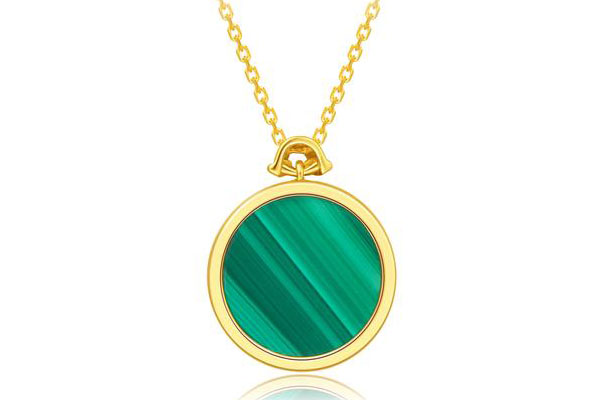Real vs Fake Malachite: How to Identify Genuine Malachite
Malachite is a popular mineral that has been used for centuries in jewelry and decorative objects. Its distinct green and black banding pattern make it a sought-after gemstone, but it also makes it a target for counterfeiters. In this article, we’ll explore the differences between real and fake malachite and provide tips on how to identify genuine malachite.
What is Malachite?
Malachite is a copper carbonate hydroxide mineral with the chemical formula Cu2CO3(OH)2. It has a distinctive green color with banding patterns of varying shades of green and black. Malachite is often found in association with other copper minerals such as azurite and chrysocolla.
Malachite is used for a variety of purposes, including decorative objects, jewelry, and as a pigment in paints. It has been used for centuries by various cultures, including the ancient Egyptians who used it for jewelry and the Greeks who used it as a decorative stone.
How to Identify Real Malachite
Identifying real malachite can be a challenge, especially if you’re not familiar with the properties of the mineral. Here are some tips to help you determine if a piece of malachite is genuine:
Physical Characteristics of Real Malachite
Real malachite has several physical characteristics that can help you identify it. First, it has a specific gravity of around 4.0, which means it is heavier than most other minerals of similar size. It also has a hardness of around 3.5 to 4 on the Mohs scale, which means it is relatively soft and can be easily scratched by harder materials like quartz.
Another physical characteristic of real malachite is its luster. Real malachite has a bright, shiny luster when it is polished, but it can also have a dull, earthy luster if it is not polished.
Color and Pattern Variations in Real Malachite
Real malachite has a distinct green color with varying shades of light and dark green. The banding pattern of real malachite is also irregular and unique, with swirls and curves that give it a distinctive look.
Tools and Techniques for Identifying Real Malachite
One way to identify real malachite is to use a UV light. Real malachite will fluoresce a bright green color under UV light, while fake malachite will not. You can also use a loupe or magnifying glass to examine the banding pattern of the malachite. Real malachite will have a unique and irregular pattern, while fake malachite will have a more uniform and repetitive pattern.
Examples of Real Malachite
Real malachite can be found in a variety of forms, including polished stones, beads, and decorative objects. One popular use for real malachite is in jewelry, where it is often set in silver or gold settings. Genuine malachite beads can also be used in bracelets, necklaces, and other types of jewelry.
Common Fake Malachite Imitations
There are several materials that are commonly used to create fake malachite, including glass, plastic, and dyed agate. These materials can be used to create convincing imitations of malachite, but they lack the unique properties of the genuine mineral.
Physical Characteristics of Fake Malachite
Fake malachite can have a similar weight and hardness to real malachite, but it often lacks the distinctive luster and banding pattern of genuine malachite. Fake malachite can also be more uniform in color, with fewer variations in shade and pattern.
How to Identify Fake Malachite
There are several ways to identify fake malachite. One method is to examine the pattern of the malachite closely. Fake malachite patterns often look too uniform and symmetrical, with fewer variations in shade and pattern compared to real malachite.
Another way to identify fake malachite is to perform a scratch test. Real malachite has a hardness of around 3.5 to 4 on the Mohs scale, while fake malachite made of glass or plastic will be harder and less likely to scratch. However, this method should be used with caution as scratching a genuine malachite piece can damage it.
Finally, a UV light can also be used to identify fake malachite. Fake malachite will not fluoresce under UV light, while genuine malachite will emit a bright green glow.
Examples of Fake Malachite
Fake malachite can be found in a variety of forms, including beads, pendants, and decorative objects. These imitations can be made from a variety of materials, including plastic, glass, and dyed agate.
Why Fake Malachite is Sold
There are several reasons why fake malachite is sold. For one, genuine malachite can be expensive and difficult to source, especially if you are looking for a specific size or shape. Fake malachite, on the other hand, is relatively easy to produce and can be sold at a fraction of the cost of genuine malachite.
Another reason why fake malachite is sold is that some people simply cannot tell the difference between genuine and fake malachite. These individuals may be willing to purchase fake malachite believing it to be genuine.
Related:
Malachite vs Green Aventurine: Understanding the Differences
Conclusion
Malachite is a popular gemstone that has been used for centuries in jewelry and decorative objects. However, the market for malachite is also full of counterfeit pieces that can be difficult to distinguish from the genuine article. By knowing the physical characteristics and unique properties of real malachite, you can avoid purchasing fake malachite and ensure that you are getting a genuine piece.

Post Comment
You must be logged in to post a comment.